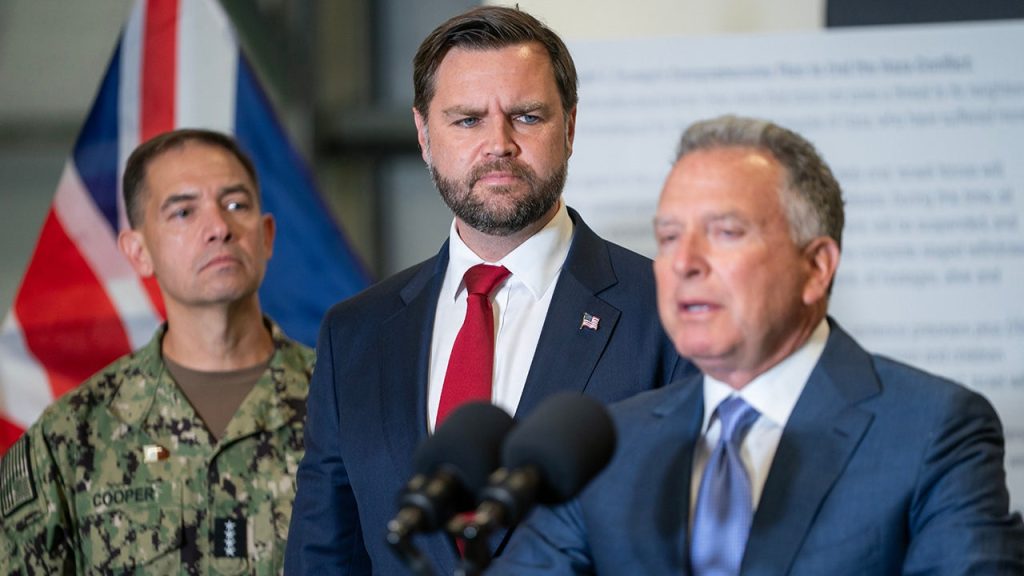U.S. Establishes Coordination Center in Israel to Support Gaza Stabilization
In a significant development following the recent U.S.-brokered peace plan for the Israel-Hamas conflict, the U.S. Central Command (CENTCOM) has established a Civil-Military Coordination Center (CMCC) in southern Israel. Opening just five days after world leaders endorsed the plan to end hostilities, this center represents a tangible step toward implementing the ceasefire agreement and addressing the humanitarian crisis in Gaza. Located a few miles northeast of Gaza, the CMCC will serve as the primary hub for coordinating stabilization efforts in the region, bringing together various stakeholders including international partners, non-governmental organizations, and private sector entities. This initiative marks an important milestone in the complex process of transitioning toward peace and civilian governance in Gaza.
The CMCC’s establishment comes with the deployment of approximately 200 U.S. military personnel to Israel, along with substantial equipment and supplies transported by C-17 aircraft. These troops, bringing expertise in transportation, planning, security, logistics, and engineering, have worked “tirelessly to build the CMCC from the ground up,” according to CENTCOM commander Admiral Brad Cooper. Under the leadership of U.S. Army Central commander Lieutenant General Patrick Frank, they have created what Admiral Cooper describes as “something that is critical to enabling the transition to civilian governance in Gaza.” Importantly, U.S. officials have emphasized that these military personnel will not enter Gaza itself; instead, they will focus on facilitating the flow of humanitarian aid, logistical support, and security assistance from international partners into the war-torn territory.
The center has been designed with collaboration as its cornerstone, featuring an operations floor to track real-time developments in Gaza and monitor the implementation of the ceasefire agreement. Its physical layout includes offices and meeting spaces specifically structured to “foster collaborative planning among leaders, representatives and staff,” reflecting the complex, multi-party nature of the stabilization efforts ahead. Over the next two weeks, U.S. personnel will work to integrate representatives from various stakeholder groups as they arrive at the coordination center. “Bringing together stakeholders who share the goal of successful stabilization in Gaza is essential for a peaceful transition,” Admiral Cooper stated, highlighting the importance of unified effort in addressing the challenges ahead.
The establishment of the CMCC represents a practical implementation of the peace plan that was recently brokered by the United States. Its opening comes at a critical juncture in the conflict, as both sides work through the initial stages of the ceasefire agreement. The center will oversee the execution of the agreement’s provisions, helping to ensure that commitments are met and that the transition toward stability proceeds as planned. The comprehensive approach embodied by the CMCC reflects the understanding that ending the conflict requires more than just a cessation of hostilities—it demands coordinated efforts across military, humanitarian, and governance dimensions, with support from the international community.
While the CMCC represents progress, significant challenges remain in the implementation of the peace plan. One immediate obstacle is Hamas’s delay in returning all 28 bodies of deceased hostages, which has slowed the transition to subsequent phases of the agreement. Israel has reaffirmed its commitment to recovering every hostage’s remains and has received the bodies of seven identified hostages this week, along with one Palestinian who was mistakenly included among them. Additionally, Gaza’s infrastructure presents substantial challenges for reconstruction efforts. The extensive tunnel network beneath Gaza City means that tunnels will need to be filled to create ground stable enough for construction—a complex engineering task that will require careful coordination among various technical experts and stakeholders.
The CMCC embodies the international community’s commitment to finding a sustainable path forward after months of devastating conflict. By bringing together military expertise, humanitarian knowledge, and diplomatic capabilities, it creates a framework through which the immense challenges of rebuilding Gaza and establishing lasting peace can be addressed. As Admiral Cooper noted, the personnel who established the center “can take great pride in knowing that they have built something that is critical” to the region’s future. While the road ahead remains challenging and uncertain, the CMCC represents a concrete step toward turning diplomatic agreements into tangible improvements for the people affected by this conflict. Its success will depend not only on the dedication of those staffing the center but also on the continued commitment of all parties to honoring the terms of the ceasefire and working together toward lasting peace.


